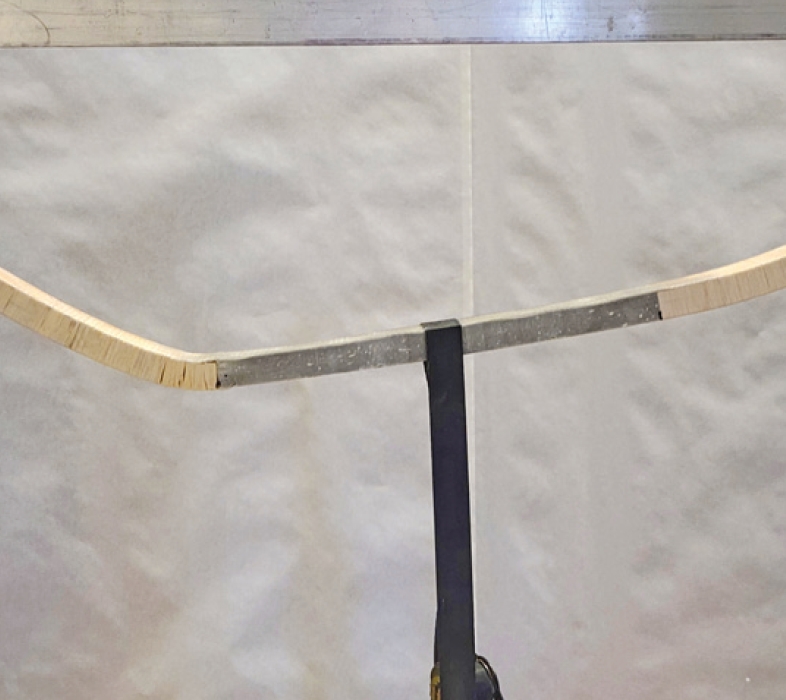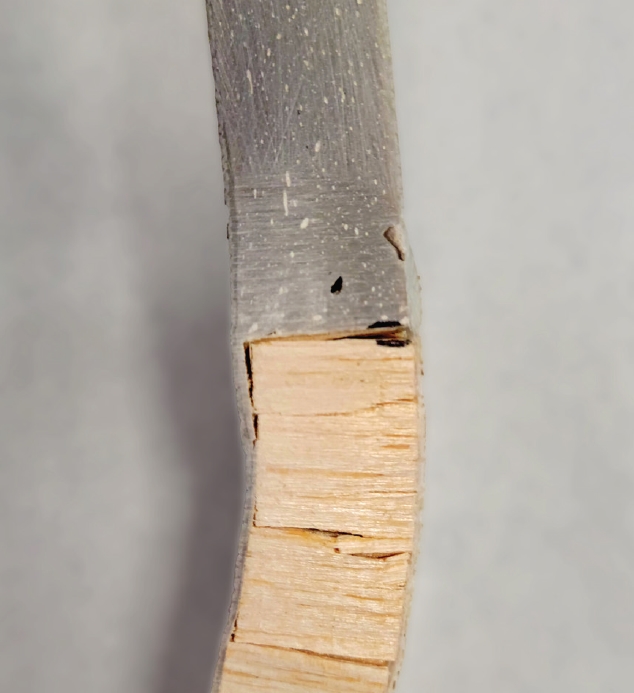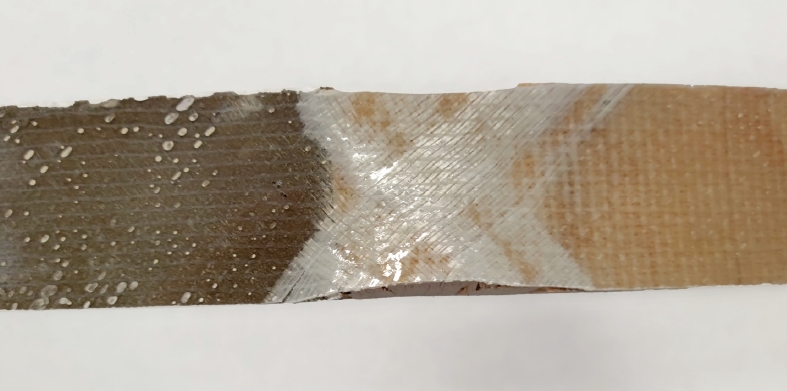
By Greg Bull—GBI Technical Advisor
When you need to repair your fiberglass boat’s balsa core but don’t have any replacement core material on hand, what can you use as an alternative? I tested some different replacement core options to see how they’d perform in flexibility and strength alongside original balsa core in a fiberglass laminate.
One popular core material is vertical grain balsa but, if it stays wet for too long, it can start to rot. This may make a soft or spongy spot you can feel if you step on it. If the softened balsa core is near or under a winch, stopper, cleat, or stantion base, you may not notice a problem until the object shifts position when it is under a load. It can be scary to see movement in a part of your boat that’s supposed to be stable.
If you need to replace core material in a small area under a winch, stopper, cleat, or stantion base, it’s best if you can complete the repair from inside the boat to eliminate the exterior cosmetic finishing work. Let’s say we have opened the repair area, removed the damaged core, and now have a small area in need of repair. My definition of a small repair area is anything less than 1 sq. ft. If you don’t already have balsa core on hand, buying standard 2’x4′ end grain balsa core sheets can be expensive and is far more material than you actually need. We’ll consider some inexpensive alternatives to balsa core.
We chose to do this as a shop floor test to show how you can learn a lot from simple tests. This test only gives a comparison of the properties. To obtain specific strength and engineering data, we would use our MTS® test machines in the GBI library.
Plywood as a Core Replacement
The simplest core replacement material is a piece of exterior grade or marine plywood. In most cases, this will work fine. Just keep in mind that plywood is stiffer than balsa core, so it won’t move or flex like the original core material. This difference in stiffness could cause cracking around the repaired area.
Plywood’s stiffness may prevent it from conforming to the surface. After all, boat surfaces are rarely flat. A simple way to improve flexibility is to cut the plywood core piece into several smaller pieces, such as 1″ or 2″ squares or 1″-wide strips. Balsa core comes with a scrim material on one side that holds the small balsa blocks together and lets them conform to the surface shape. Cutting plywood in this way can mimic scrimmed balsa core’s flexibility.
Using Dimensional Lumber to Replace the Core
Dimensional lumber (such as a pine 2×4) can also work as core material if you cut it into sections of ¼”, 3/8″, ½”, or any custom thickness you might need. You can arrange these vertical grain cuttings into a grid pattern to replace the missing core and conform to the surface. Use the same approach as described for plywood core replacement above to imitate the flexibility of balsa core.
Replacing Core with Epoxy
We don’t recommend replacing core material with thickened WEST SYSTEM® Epoxy alone for a couple of reasons. Epoxy will create a hard spot in the repair area, resulting in stiffness and cracking similar to what can happen when solid plywood is used. You should avoid any core replacement material with different flexibility from the original core material.
If you’re trying to replace a thick core with epoxy, another problem you may run into is uncontrolled exotherm. Filling a large void with thickened epoxy all at once may generate enough heat to damage the surrounding laminate.
When you need to repair your fiberglass boat’s balsa core but don’t have any replacement core material on hand, what can you use as an alternative? I tested some different replacement core options to see how they’d perform in flexibility and strength alongside original balsa core in a fiberglass laminate.
One popular core material is vertical grain balsa but, if it stays wet for too long, it can start to rot. This may make a soft or spongy spot you can feel if you step on it. If the softened balsa core is near or under a winch, stopper, cleat, or stantion base, you may not notice a problem until the object shifts position when it is under a load. It can be scary to see movement in a part of your boat that’s supposed to be stable.
If you need to replace core material in a small area under a winch, stopper, cleat, or stantion base, it’s best if you can complete the repair from inside the boat to eliminate the exterior cosmetic finishing work. Let’s say we have opened the repair area, removed the damaged core, and now have a small area in need of repair. My definition of a small repair area is anything less than 1 sq. ft. If you don’t already have balsa core on hand, buying standard 2’x4′ end grain balsa core sheets can be expensive and is far more material than you actually need. We’ll consider some inexpensive alternatives to balsa core.
Plywood as a Core Replacement
The simplest core replacement material is a piece of exterior grade or marine plywood. In most cases, this will work fine. Just keep in mind that plywood is stiffer than balsa core, so it won’t move or flex like the original core material. This difference in stiffness could cause cracking around the repaired area.
Plywood’s stiffness may prevent it from conforming to the surface. After all, boat surfaces are rarely flat. A simple way to improve flexibility is to cut the plywood core piece into several smaller pieces, such as 1″ or 2″ squares or 1″-wide stripes. Balsa core comes with a scrim material on one side that holds the small balsa blocks together and lets them conform to the surface shape. Cutting plywood in this way can mimic balsa core’s flexibility.
Using Dimensional Lumber to Replace the Core
Dimensional lumber (such as a pine 2×4) can also work as core material if you cut it into sections of ¼”, 3/8″, ½”, or any custom thickness you might need. You can arrange these cuttings into a grid pattern to replace the missing core and conform to the surface. Use the same approach as described for plywood core replacement above to imitate the flexibility of balsa core.
Replacing Core with Epoxy
We don’t recommend replacing core material with thickened WEST SYSTEM® Epoxy alone for a couple of reasons. Epoxy will create a hard spot in the repair area, resulting in stiffness and cracking similar to what can happen when solid plywood is used. You should avoid any core replacement material with different flexibility from the original core material.
If you’re trying to replace a thick core with epoxy, another problem you may run into is uncontrolled exotherm. Filling a large void with thickened epoxy all at once may generate enough heat to damage the surrounding laminate.
Testing for Flexibility
To see how different core materials would behave in a laminate, I performed some simple shop tests on four 54″x1½” sample panels I made. These were simple shop tests that compare samples to each other and don’t involve ASTM standards. They’re easy to replicate at home when you want to determine the best materials for a repair.
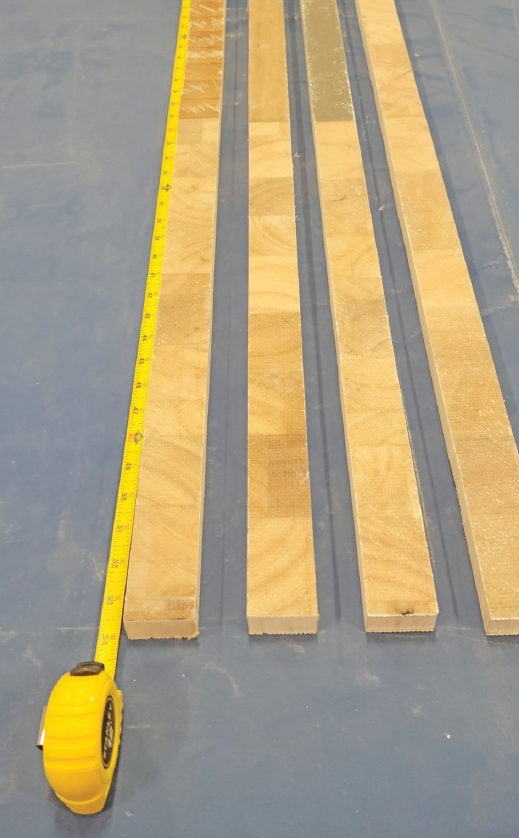
I started with a control sample panel of ¾” balsa core laminated with one layer of 737 17 oz. Biaxial Fabric on each side. The other three panels were also balsa laminated with 737 Biaxial Fabric, but I made them with a 1′ section of replacement core material in the center. The alternate core materials in these panels were:
- End grain pine cut ¾” thick from a 2×4 and bonded with unthickened WEST SYSTEM Epoxy
- ¾” plywood and bonded with thickened epoxy
- Thickened WEST SYSTEM Epoxy alone
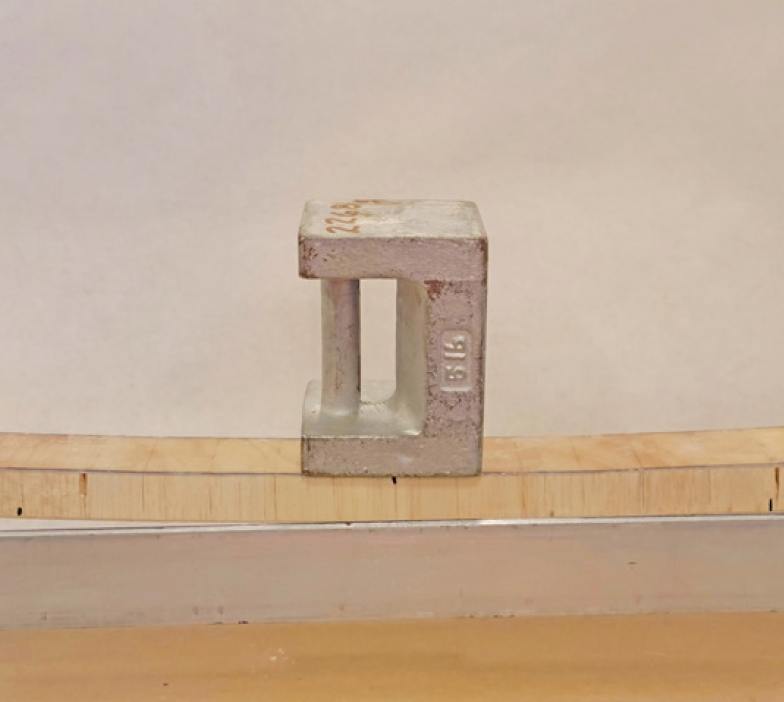
As expected, the balsa cored control sample deflected the most, a full 1½” with 5 lbs. of weight on the center of the test piece. It formed a gentle curve as I applied the weight. The end grain pine cut from a 2×4 to mimic balsa core was only a little stiffer, deflecting a full 1½” with 8 lbs. of weight. It also had a nice curve to it all through the transition from one coring material to the next. Bonding it with unthickened epoxy left some air gaps between the pieces of end grain pine, making it similar to the balsa core in the control sample panel.
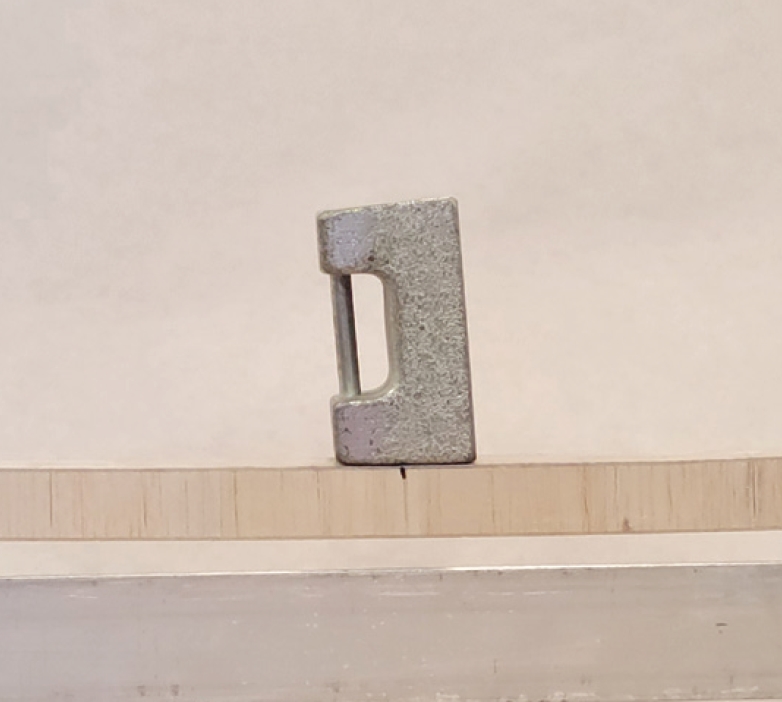
I tested the panel with the ¾” plywood replacement section next. With 8 lbs. added pressure it deflected only ⅞”. The plywood stayed fairly straight or flat across the 1′ section then bent up right after the joint between the plywood and balsa core.
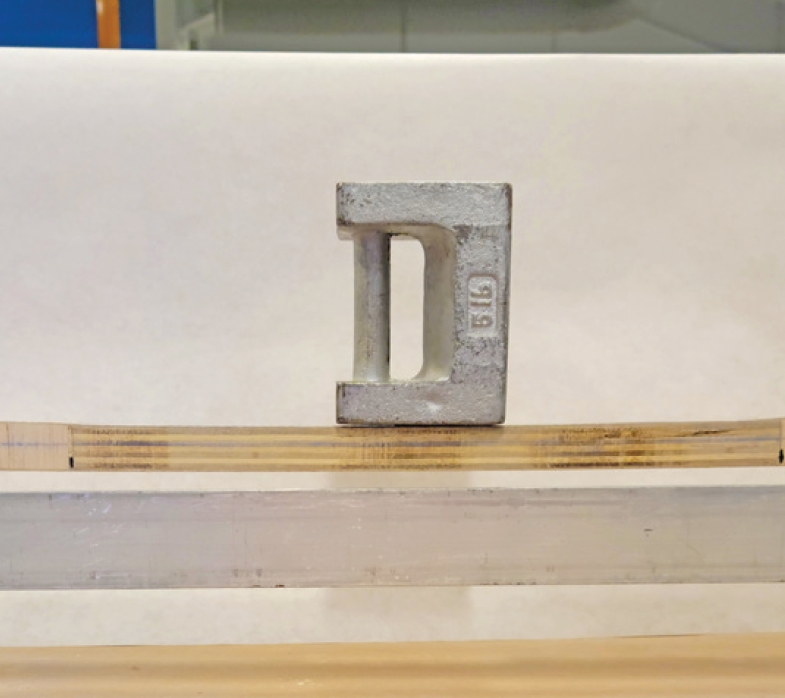
The panel with the replacement core of ¾” thickened epoxy performed similar to the plywood but was slightly stiffer, bending only ¾” with 8 lbs. on it. It was also very flat through the one-foot area than bent up quickly at the edge of the balsa core.
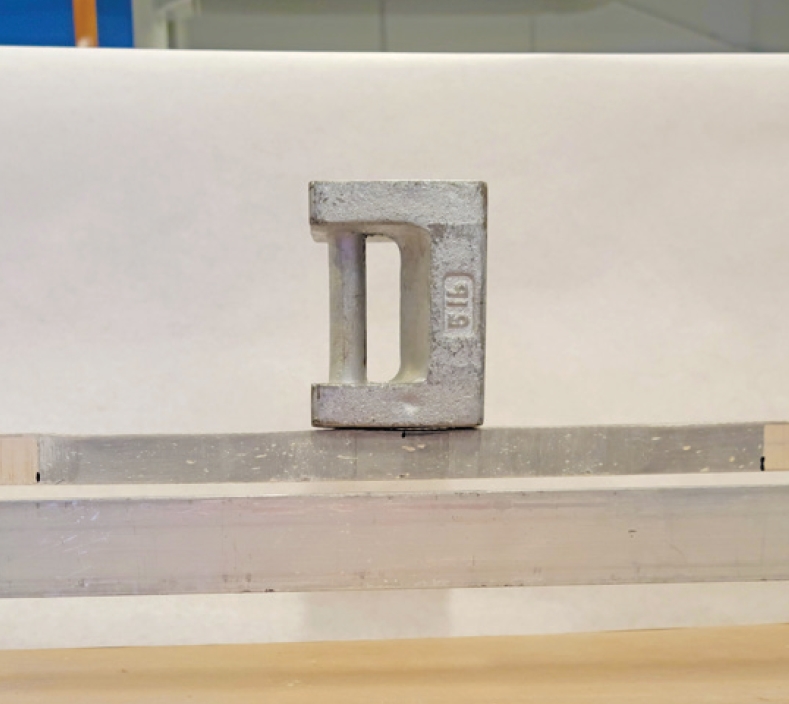
I had expected the thickened epoxy and solid plywood sample to be stiffer than the balsa cored control sample, and it was. What surprised me a little was how closely the end grain pine set in unthickened epoxy performed in the bending test compared to the balsa core control sample.
Breaking the Samples
In stressing the samples to their breaking point, I saw a more pronounced flat spot where the different cores materials met, with a sharp bend at the edge of the balsa core. This was also where the breaks occurred. I did this test by supporting the sample panels 5″ in from each end, then used a ratchet strap to pull down on the center of each panel.
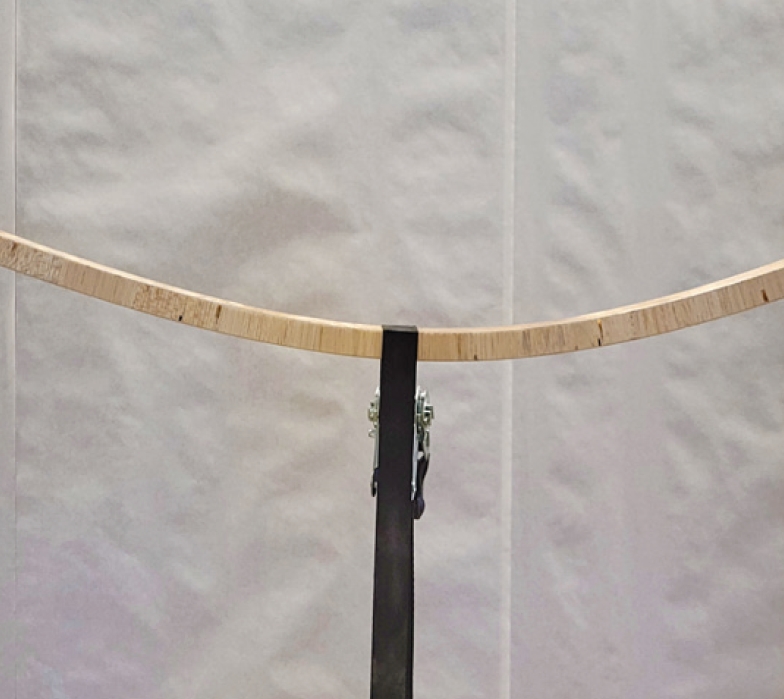
The control sample panel with the all-balsa core just folded and cracked in half when it broke, because of the concentrated area of bending or loading. The others all broke at the edge where the balsa core met the alternate core material and fractured the fiberglass on top in compression.
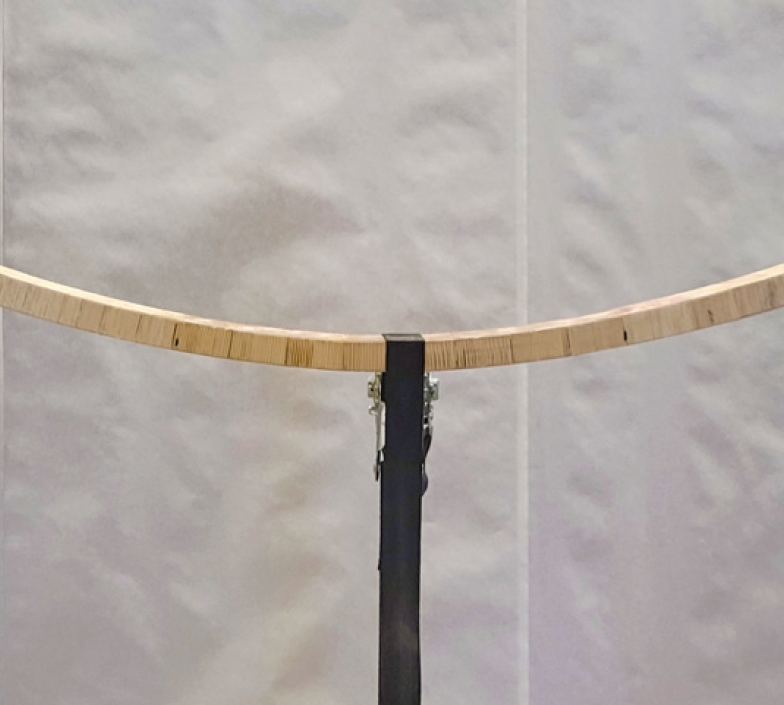
Another sample panel that broke at the repair joint was the one with thickened WEST SYSTEM Epoxy as the core replacement. Its fiberglass and balsa core fractured right at the transition from epoxy to balsa core. This break happened exactly where I thought it would; I just imagined it was going to be a more dramatic break than it actually was.
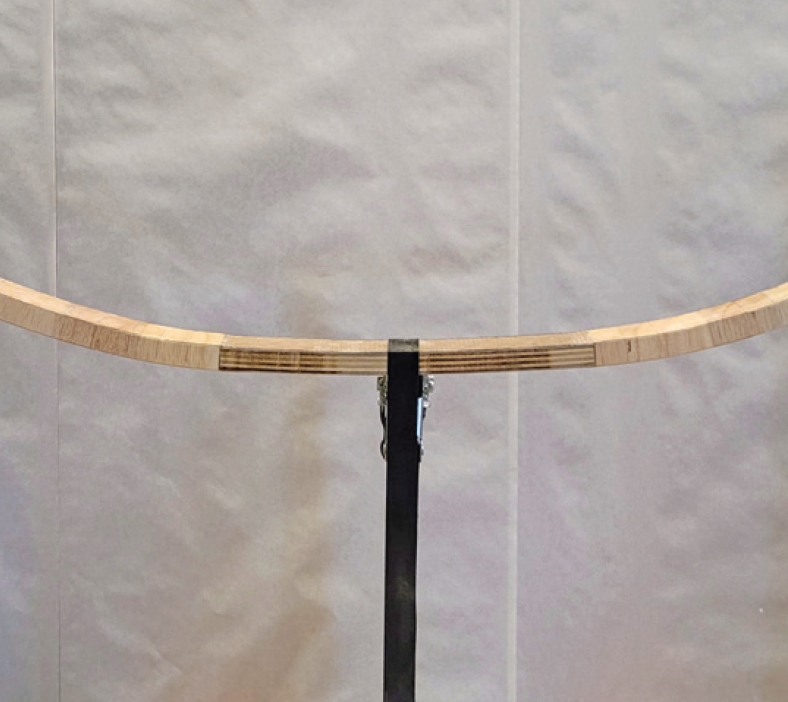
This test only creates a point load and doesn’t mimic a distributed load that a hull bottom would be subjected to. For small areas of core replacement, dissimilar materials can be acceptable but it is important to understand how they will perform. Replacing a section of damaged core with materials similar to the original core will prevent hard spots and offer the best results.
